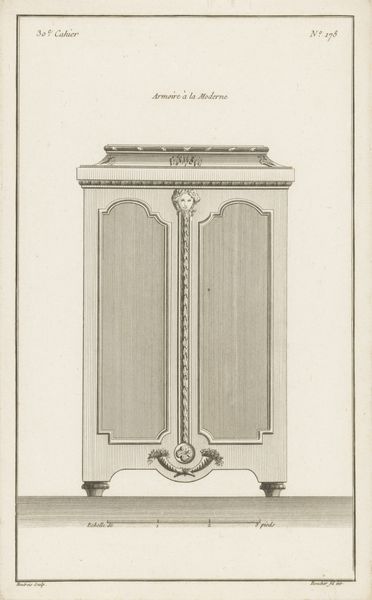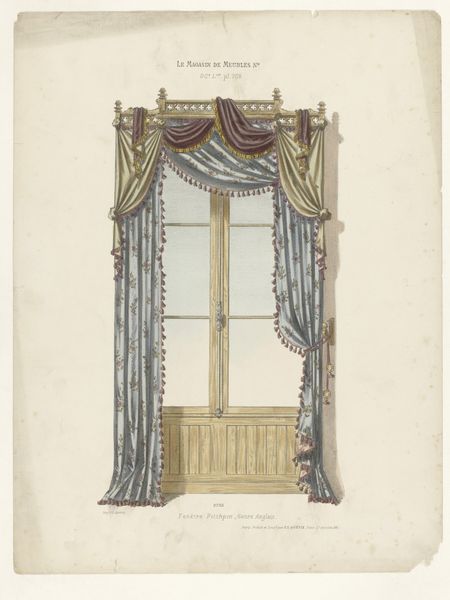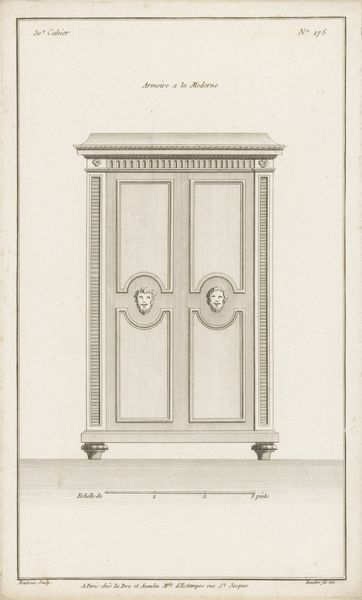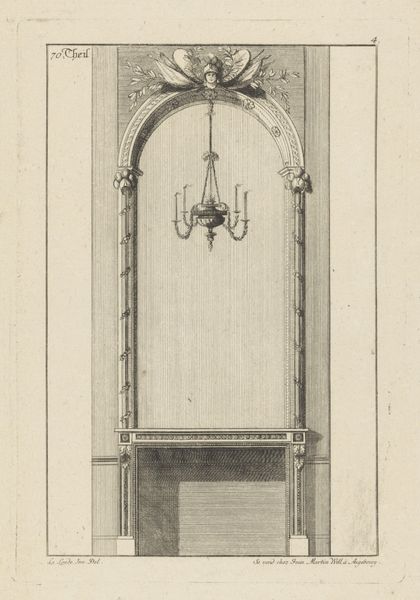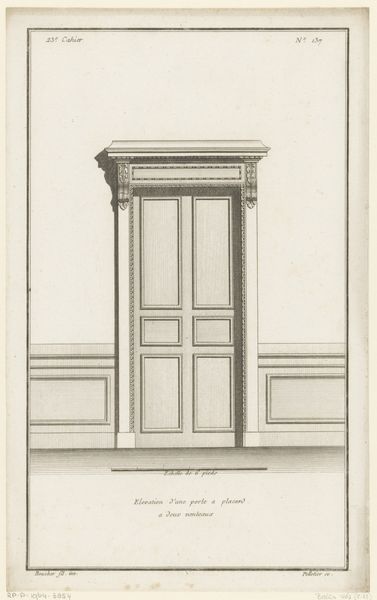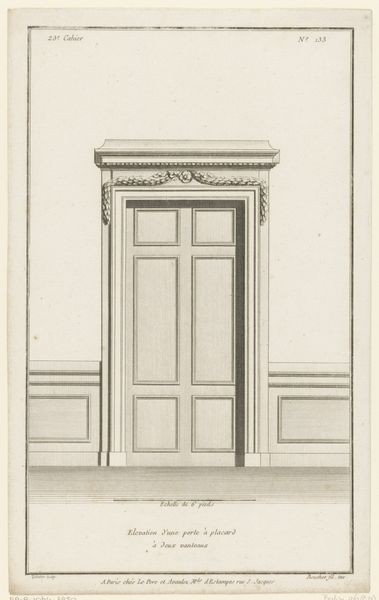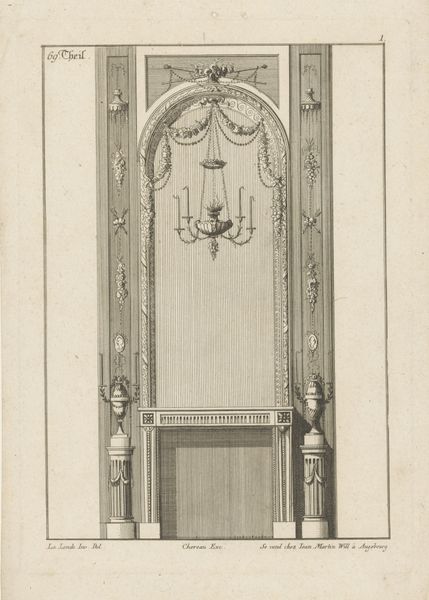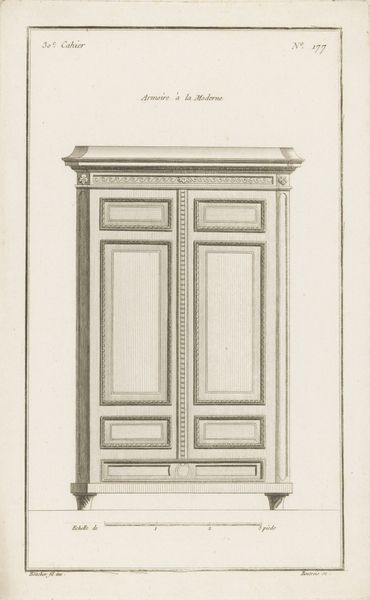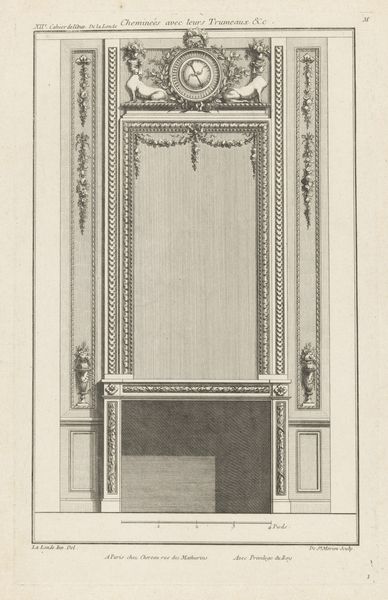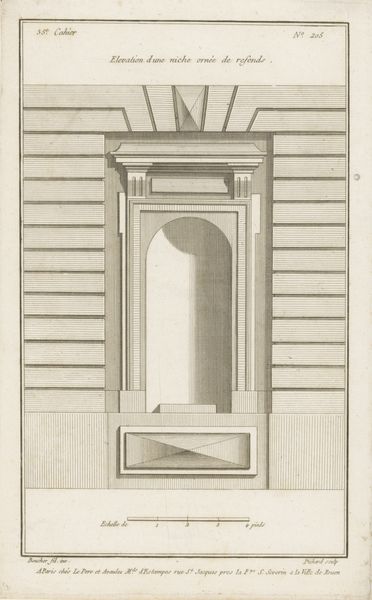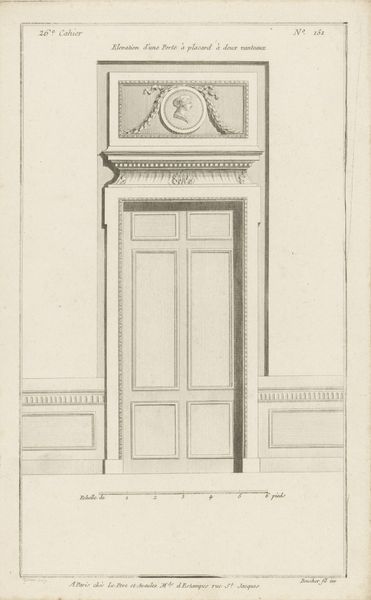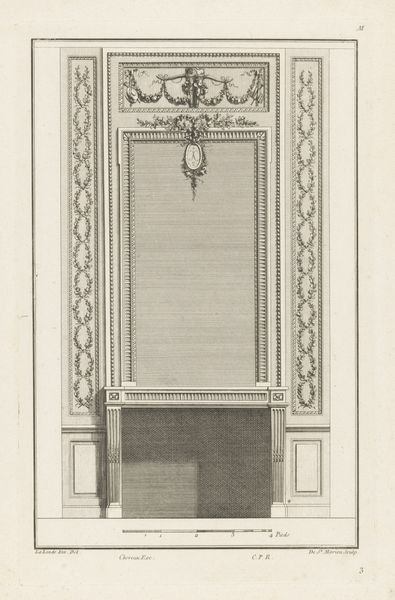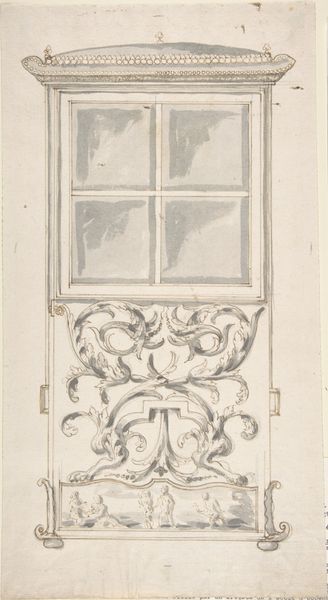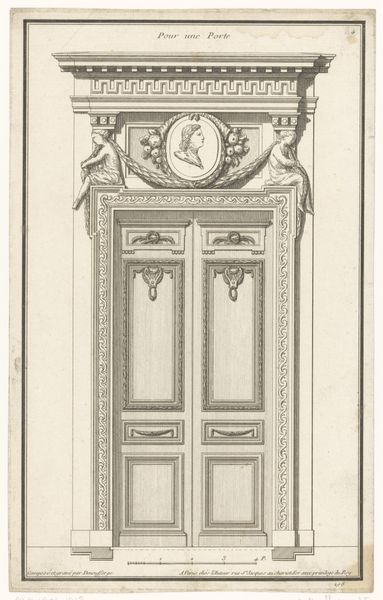
drawing, graphic-art, ornament, print, engraving, architecture
#
drawing
#
graphic-art
#
ornament
# print
#
line
#
engraving
#
architecture
Dimensions: sheet: 8 5/16 x 4 1/8 in. (21.1 x 10.4 cm)
Copyright: Public Domain
Curator: Let’s consider this rendering from the Metropolitan Museum of Art: an engraving from the 18th century called “Design for a Window with Yellow Drapery,” created by an anonymous designer. It presents an elevation of a window treatment. What are your initial impressions? Editor: The linear quality and pale washes immediately make me think about architectural drafting and the meticulous planning involved in interior spaces. The rendering appears to prioritize capturing the delicate materiality of the textile: the yellow drapery. Curator: Absolutely. The rendering, through its specific detailing, gives insight into the cultural and gendered norms associated with domesticity in the 1700s. The drapery, the garland motif… What might these ornate designs suggest? Editor: It speaks volumes about class. These kinds of lavish textiles and expertly crafted window treatments were indicators of social standing and financial means. One has to think about who produced these materials, where the fabric came from. Was it locally sourced, or indicative of larger networks of trade? Curator: Exactly! The global exchange of materials shaped aesthetic tastes and social hierarchies. Textiles are particularly interesting to think about as technologies in their own right; the craft, artistry, and labor required for their manufacture played a pivotal role in not only defining aesthetics but determining economic conditions and, by extension, power structures. The layers of meaning that are communicated through seemingly simple household materials! Editor: It makes one appreciate the work and effort necessary for even such seemingly modest engraving: the paper making, the ink formulation, and the artistry of the engraver themselves. Curator: I think it also forces us to remember, too, the window as a metaphorical framing device. Who had access to what spaces? Editor: True. It's interesting to see something like this removed from its original architectural context, but perhaps seeing it outside that situation gives us better clarity as to the object's initial implications. Curator: Well said! Thinking critically about the layers that structure these spaces reveals complex and often inequitable distributions of power. Editor: I completely agree.
Comments
No comments
Be the first to comment and join the conversation on the ultimate creative platform.
